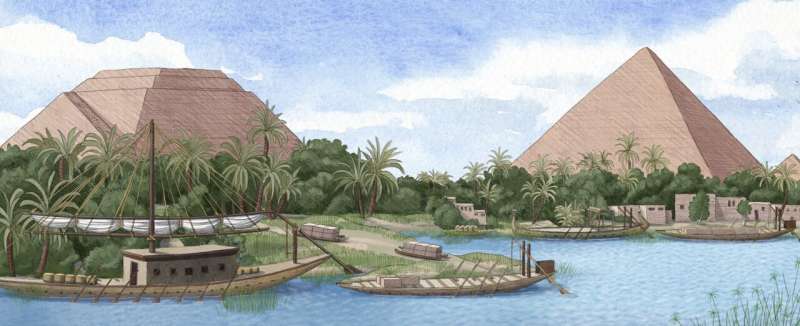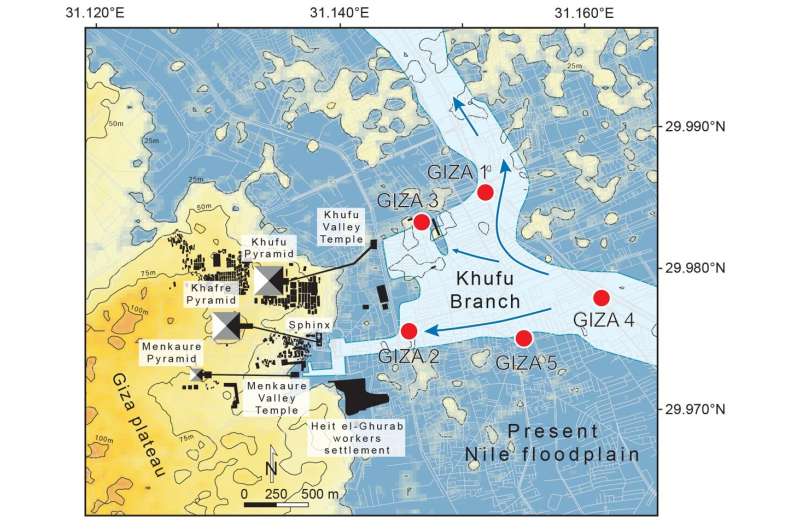August 30, 2022 report
Khufu branch of Nile River once flowed close enough to Giza to carry the stones needed to build the pyramids

A team of researchers affiliated with several institutions in France, working with a colleague from China and another two from Egypt, has found evidence that shows the Khufu branch of the Nile River once ran so close to Giza that it could have been used to carry the stones that were used to build the famous pyramids. In their paper published in Proceedings of the National Academy of Sciences, the group describes their study of fossilized pollen grains found in the sediments around Giza and what it showed them about the history of the Khufu branch.
In their work, the researchers obtained core sediment samples that have been collected from several sites in and around Giza over the years and then took a close look at the fossilized pollen grains trapped in them for thousands of years.
By combining results from prior studies that involved studying the rock layers surrounding the pyramids, they found that they were able to reconstruct the history of the Khufu branch as it flowed and ebbed in the area over the prior 8,000 years. Then, looking at the timeline and flow of the branch, they found its levels were high enough that it reached nearly all the way to Giza—7 kilometers from the Nile—during the times when three of the major pyramids (Menkaure, Khafre and Khufu) were built—approximately 4,000 years ago.
The researchers note that the pollen grain fossils they found were mostly from flowering grasses like the ones that line the Nile River today. They also found evidence of a few marsh plants, which typically grow on the edges of lakes—and that showed that the Khufu branch remained at high levels in the area long enough for nature to consider it permanent.

The researchers also found that not long after the reign of King Tutankhamun, levels of the branch began to drop, leading to a much more arid environment. Other studies of bones and teeth from mummies of the time also showed the area becoming much drier. The researchers suggest that others using the same techniques could learn more about how changing river flow impacted other ancient civilizations.
More information: Hader Sheisha et al, Nile waterscapes facilitated the construction of the Giza pyramids during the 3rd millennium BCE, Proceedings of the National Academy of Sciences (2022). DOI: 10.1073/pnas.2202530119
Journal information: Proceedings of the National Academy of Sciences
© 2022 Science X Network





















